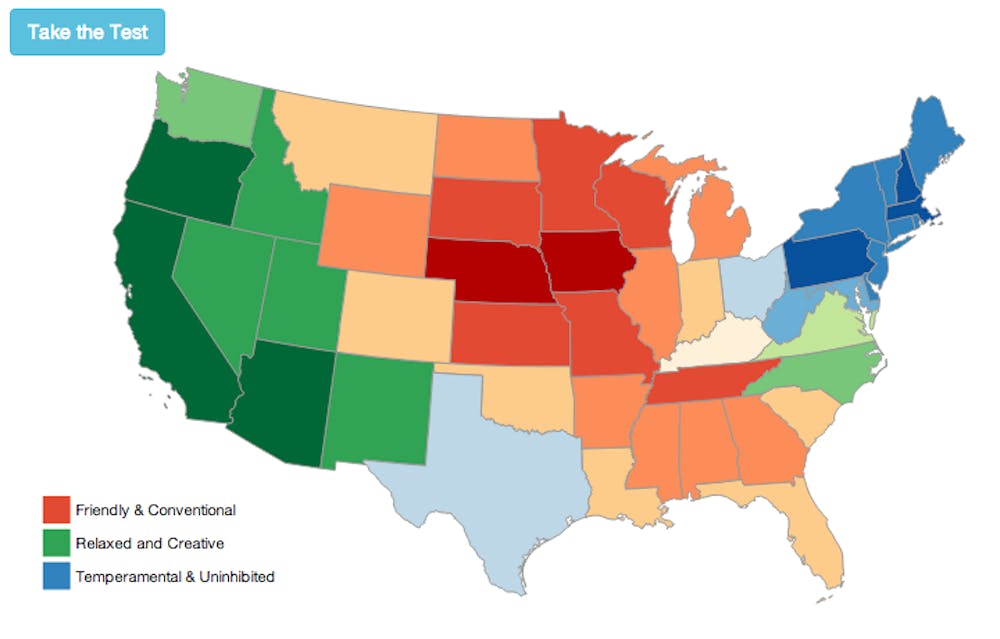Using an interactive U.S. map that’s circulating on Facebook, Time magazine released “America’s Mood Map,” classifying regions of the U.S. by personality traits. Some Gainesville residents, however, are reacting skeptically to the concept of personifying geography.
The study, published in the Journal of Personality and Social Psychology, uses data from thousands of personality tests based on the Big Five Inventory model. The tests rated participants on five traits: openness, conscientiousness, extroversion, agreeableness and neuroticism.
Based on the collective test scores, Middle Atlantic and New England states had “temperamental and uninhibited” tendencies. The South and Midwest had “friendly and conventional” tendencies. The West Coast, Rocky Mountains and Sun Belt had “relaxed and creative” tendencies.
But Amy Panikowski, a 34-year-old UF geography doctoral student, said the model leaves out some aspects that can shape regional personality.
“Considering urban versus rural geography, you will have a significant difference,” she said. “The ‘mood map’ is overgeneralizing regions and not accounting the spatial factors.”
Cody Starling, a 23-year-old UF history senior, disagreed with the map entirely. He explained stereotypes change with personal experience.
“Before I went to New York City, I saw people as being stuck-up and not willing to help. Things changed when I went there. They were really friendly and helped me with directions,” Starling said.
Lauren Griffin, a teaching assistant in UF’s sociology department, said she’s hesitant the statements are overly broad.
“Pieces like this are interesting,” she said. “They’re intellectual curiosities, but to make judgments about regions — I just don’t know how you could do that with only a Big Five inventory.”
A version of this story ran on page 4 on 10/24/2013 under the headline "State map gets personal"






